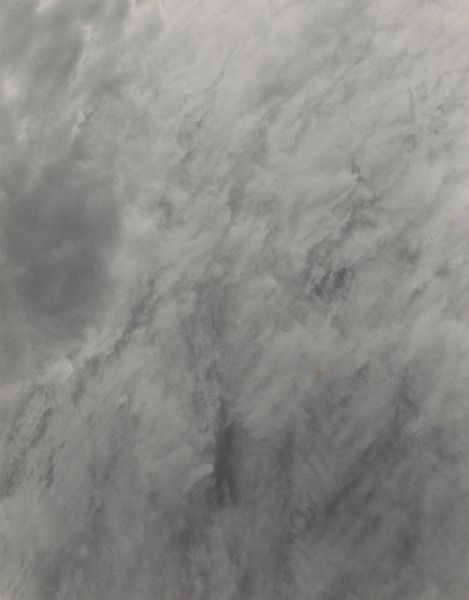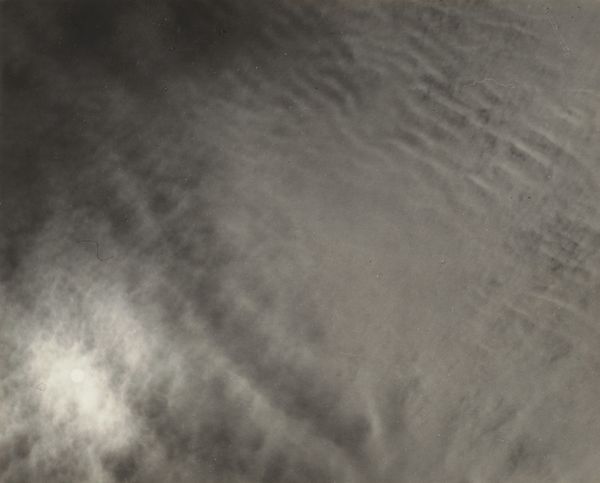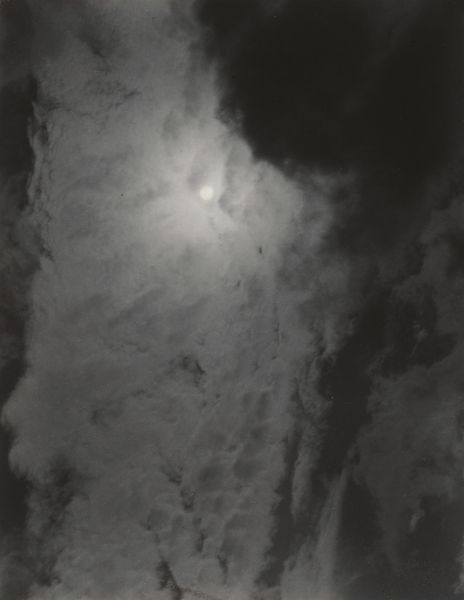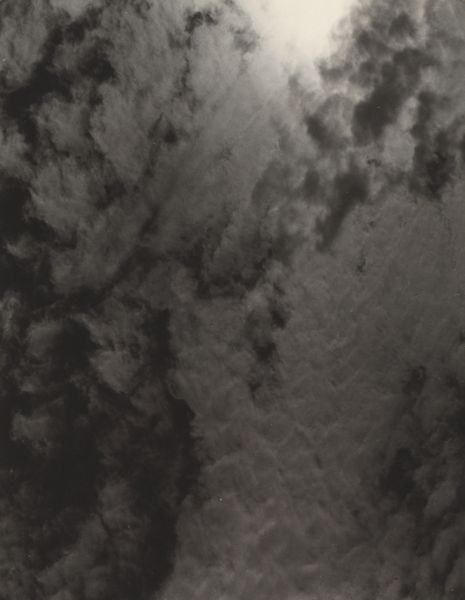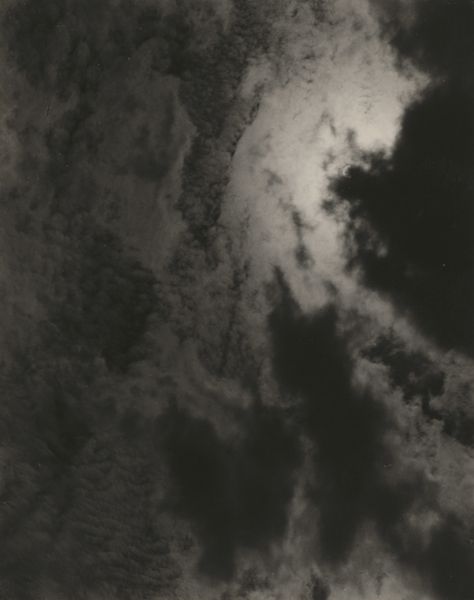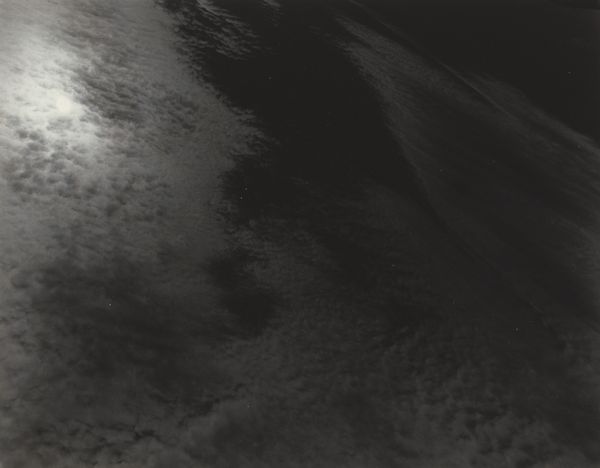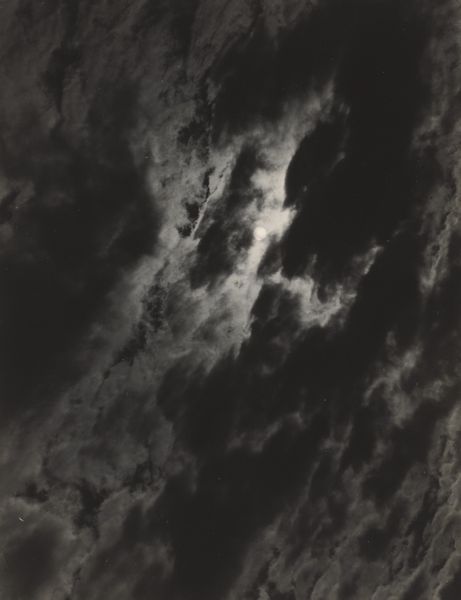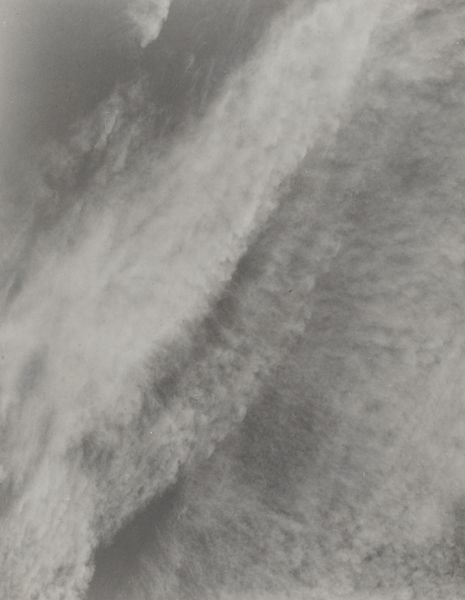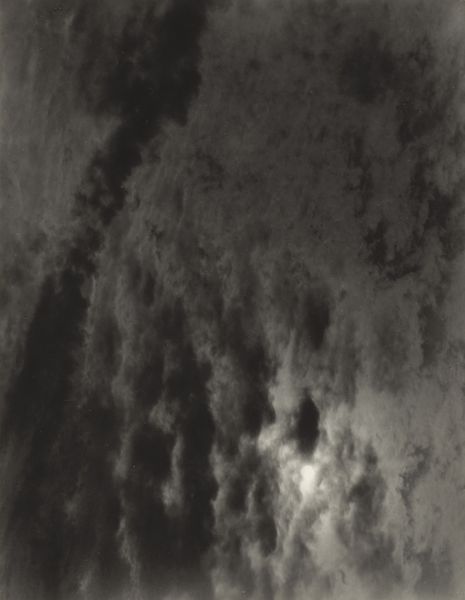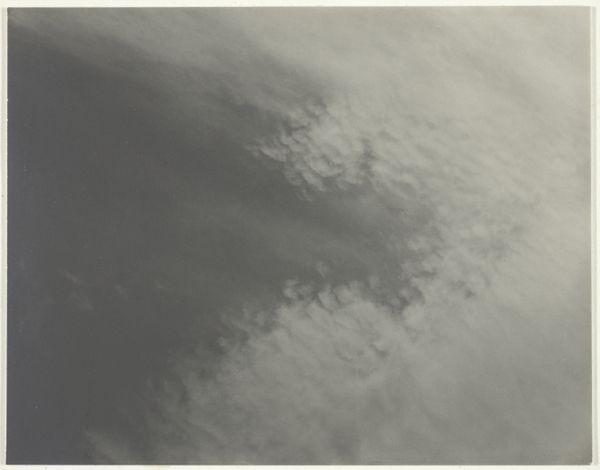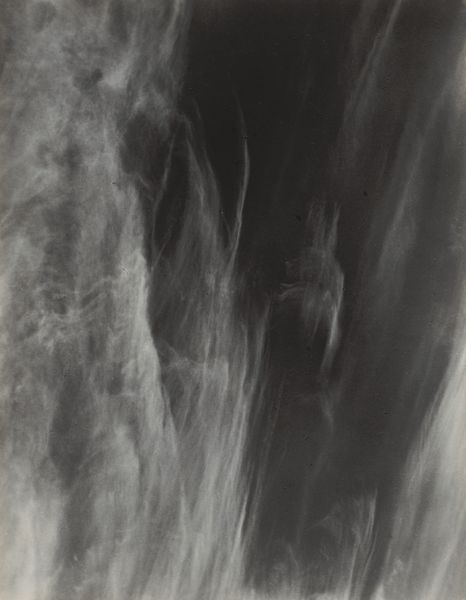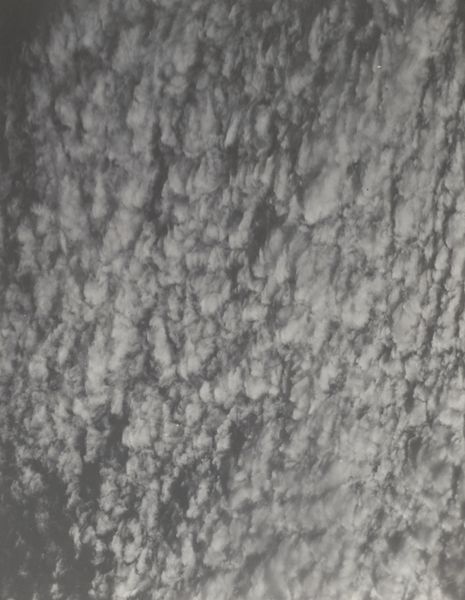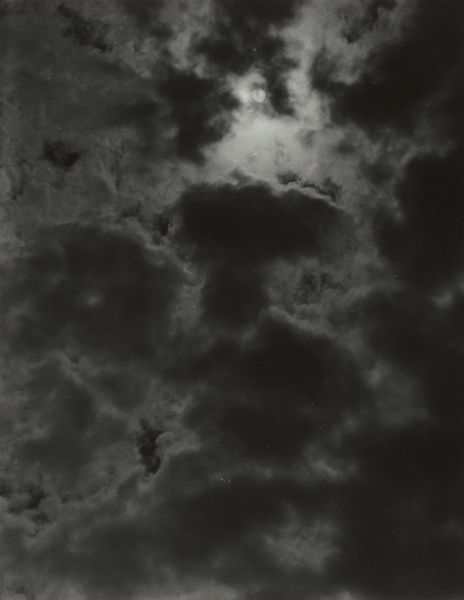
Dimensions: sheet (trimmed to image): 11.9 x 9.2 cm (4 11/16 x 3 5/8 in.) mount: 33.8 x 26.9 cm (13 5/16 x 10 9/16 in.)
Copyright: National Gallery of Art: CC0 1.0
Curator: Looking at this photograph, what first strikes you? It’s titled "Equivalents" and was created in 1927 by Alfred Stieglitz. Editor: There’s a palpable sense of melancholy, or perhaps profound serenity, communicated through this layered mass. A dance of shadow and luminosity dominates this scene and it reminds me of turbulent emotions. The composition is nearly all cloud, alluding to internal landscape, perhaps? Curator: It’s interesting you pick up on that emotional read so quickly. Stieglitz very consciously moved into photographing the sky and clouds to reflect internal states. He'd broken from previous artistic circles and his relationship with Georgia O'Keeffe was deeply complicated at this point. So yes, abstraction becomes a language for feeling here. In terms of art history, his turn towards these "Equivalents," as he called them, came after years of championing straight photography—concerned with depicting the world objectively. Editor: These clouds, caught with such contrast, almost look like rolling waves frozen in time. Are they meant to carry symbolic meaning? I am curious if each cloud shape might represent an emotion, like fear, or hope, or loss. Curator: Well, he never assigned fixed meanings, so to speak. But the freedom these cloudscapes afforded him directly challenged the control that figures like Gertrude Stein attempted to impose on the art world. It was about the expressive potential of photography being equal to painting. They are devoid of obvious cultural references; you might say the cultural meaning here arises from Stieglitz's struggle for photographic acceptance. Editor: A deeply personal struggle reflected in the boundless sky... So in a way, the lack of conventional iconography becomes the strongest symbol, communicating openness and boundless potential. It breaks the photographic image free from simple, straightforward interpretation. The cultural weight resides, then, in that very freedom he's claiming. Curator: Exactly. By turning to abstraction, he turned away from representational constraints—making a clear statement about photography's legitimacy as an art form capable of complex, individualized expression. He influenced countless artists moving forward to view abstraction with rigor, but also honesty and passion. Editor: That's the paradox, isn't it? This work achieves universality precisely because it’s intensely personal. And understanding that, even fleetingly, leaves you strangely moved. Curator: Absolutely. And this image invites us all to seek our own personal "equivalents" in it. To explore the depths of emotional potential contained in this ethereal landscape of clouds.
Comments
No comments
Be the first to comment and join the conversation on the ultimate creative platform.
